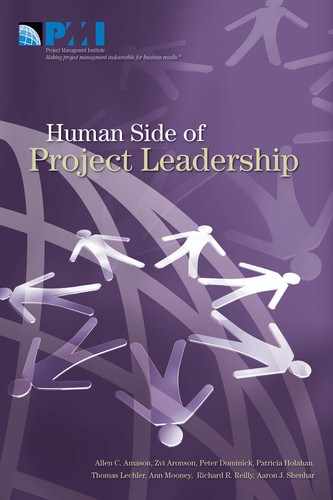References
Borman, W.C. and Motowidlo, S.J. (1993). Expanding the criterion domain to include elements of contextual performance. In N. Schmitt and W.C. Borman (Eds). Personnel Selection in Organizations. San Francisco, CA: Jossey–Bass, 971–78.
Boudreau, J.W. and Ramstad, P.M. (2003). Strategic I/O psychology and the role of utility analysis models. In W. Borman, D. Ilgen, and R. Klimoski (Eds.). Handbook of Psychology. New York: Wiley, 12, 193–221.
Brannick, M.T., Salas, E. and Prince, C. (Eds.) (1997). Team performance and measurement: Theory, methods, and applications. Mahwah, NJ: Lawrence Erlbaum Associates.
Bruch, H., and Ghoshal, S. (2003). Unleashing organizational energy. Sloan Management Review, 45(1), 45–51.
Cannon-Bower, J.A., Tannenbaum, E.S., and Volpe, C. E. (1995). Understanding the dynamics of diversity in decision-making teams. In R. Guzzo, E. Salas, and Associates (Eds.). Team effectiveness and decision making in organizations. San Francisco, CA.
Cavanagh, G.F. (2000). Spirituality for managers: Context and ciritique. In J. Biberman and M.D. Whitty, (Eds.). Work and spirit: A reader of new spiritual paradigms for organizations. Scranton, PA: The University of Scranton Press, 149–166.
Delbecq, A. L. (2000). Christian spirituality and contemporary spirituality. In J. Biberman and M.D. Whitty, (Eds). Work and spirit: A reader of new spiritual paradigms for organizations. Scranton, PA: The University of Scranton Press, 175–180.
Denison, D. R. (1996). What is the difference between organizational culture and organizational climate? A native’s point of view on a decade of paradigm wars. Academy of Management Review, 21(3), 619–634.
Detert, J. R., Schroeder, R. G., and Mauriel, J. J. (2000). A framework for linking culture and improvement initiatives in organizations. Academy of Management Review, 25(4), 850–863.
Duchon, D. and Ashmos Plowman, D. (2005). Nurturing the spirit at work: Impact on work unit performance. Leadership Quarterly, 16(5), 807.
Eisenhardt, K. (1989). Building theories from case study research. Academy of Management Review, 14(4), 532–550.
Giacalone, R. A. and Jurkiewicz, C.L. (2003). Toward a science of work place spirituality. In Giacalone, R. A. and Jurkiewicz, C.L. (Eds). Handbook of workplace spirituality and organizational performance. Armonk, NY: M.E. Sharp, 3–28.
Goffee, R., and Jones, G. (1998). The character of a corporation: How your company’s culture can make or break your business. New York: Harper Business.
Jassawalla, A. R. and Sashittal, H.C. (1998). An examination of collaboration in high-technology new product development processes. The Journal of Product Innovation Management, 15(3) 237–254.
Kanter, R.M. (2000). A culture of innovation. Executive Excellence, 17(8), 10–11.
Koys, D.J. (2001). The effects of employee satisfaction, organizational citizenship behavior, and turnover on organizational effectiveness: A unit-level, longitudinal study. Personnel Psychology, 54(1), 101–114.
Krishnan, V.R. (2001). Value systems of transformational leaders, Leadership and Organisational Development Journal, 22(3), 126–31.
Parboteeach, K.P. and Cullen, J.B. (2003). Ethical climates and spirituality: An exploratory examination of theoretical links. In R.A. Giacalone and C.L. Juriewicz (Eds.), Handbook of workplace spirituality and organizational performance. Armonk, NY: M.E. Sharpe, 137–152.
Pettigrew, A.M., Trice, H., and Beyer, J. (1992). The culture of work organizations. Englewood Cliffs, NJ: Simon and Schuster.
Saffold, G.S. (1988). Culture traits, strength and organizational performance: Moving beyond “strong” culture. Academy of Management Review, 13(4), 546–558.
Sarros, J.C. and Santora, J.C. (2001). Leaders and values: A cross-cultural study. Leadership and Organisational Development Journal, 22(5), 243–8.
Schein, E.H. (1990). Organizational culture. American Psychologist, 45(2,), 109–119.
Schein, E.H. (1992). Organizational culture and leadership. (2nd ed.) San Francisco, CA: Jossey Bass.
Schein, E.H. (1996). Three cultures of management: The key to organizational learning. Sloan Management Review, Fall, 9–20.
Shenhar, A.J. (2004). Strategic project leadership: Toward a strategic approach to project management. R&D Management, 34(5), 569–578.
Shenhar, A.J., and Dvir, D. (2004). How projects differ, and what to do about it. In Morris, P.W.G. and Pinto, J.K. (Eds.). The Wiley Guide to Managing Projects, New York: Wiley & Sons, 1265–86.
Weiss, H.M. and Cropanzano, R. (1996). Affective events theory: a theoretical discussion of the structure, causes and consequences of affective experiences at work. In B.M. Staw and LL. Cummings (Eds.). Research in Organizational Behaviour, 19, 1–74.
Whetten, D.A. and Cameron, K.S. (2005). Developing management skills (6th ed.). New York: Addison-Wesley.
Yin, R.K., (2003). Case study research: Design and methods. Thousand Oaks, CA: Sage Publications.
